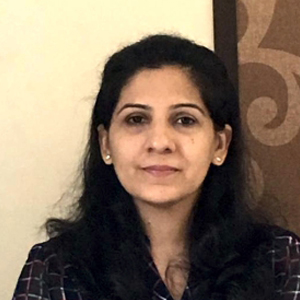
Amblyopia: Amblyopia, also known as lazy eye, is reduced vision in an eye that results from misalignment of the eyes (strabismus), a need for glasses (refractive error), or disruption of light passing through the eye (e.g. pediatric cataract). If recognized early (preschool years), amblyopia generally responds well to treatment. If recognized later (after 9-10 years of age), amblyopia is much more difficult to treat and the child may have permanent vision loss. Signs and symptoms to watch for include misaligned eyes, squinting one eye, bumping into objects or other signs of poor depth perception, head tilting, and double vision. Amblyopia therapy can include glasses, patching, eye drops, and sometimes surgery.
Congenital/Paediatric Cataract: Any opacity or clouding of the normally clear lens of the eye.
Childhood Tearing: may be present from birth or start after a few weeks. Mostly due to Congental blockade of the Nasolacrimal duct. Treatment includes Lacrimal sac massaging and Probing of the NLD if tearing or epiphora does not resolve.
Cortical Visual Impairment and Developmental Abnormalities: During development of the fetus, abnormalities in the visual system can occur. Some developmental abnormalities include coloboma, microphthalmia (small eye), and optic nerve hypoplasia. These abnormalities often result in vision loss.
Strabismus/Squint-misalignment of the eyes (strabismus), which causes one to see an object in two different places at the same time. The object can be displaced in a horizontal, vertical, or diagonal fashion. Depending on the type and cause of the strabismus, treatment may include eyeglasses, prisms, surgery, Botox injection, and eye-patching therapy.
Genetic Eye Disease: Many eye diseases have a known genetic abnormality. These diseases are often inherited and frequently there are other family members who have had the disease. In cases of known inherited eye disease in the family, early evaluation is important.
Childhood /Congenital Glaucoma: A disease resulting in damage to the optic nerve. Elevated eye pressure is the most common risk factor. Signs and symptoms of pediatric glaucoma include cloudy cornea, tearing, frequent blinking, light sensitivity, and redness of the eye.
Nystagmus: Nystagmus is an involuntary, rhythmic oscillation of the eyes. The eye movements can be side-to-side, up and down, or rotary. Nystagmus may be present at birth or acquired later in life. It results from abnormal binocular fixation early in life. It also may accompany a number of eye disorders and neurological disorders.
Retinopathy of Prematurity (ROP): Retinopathy of prematurity (ROP) occurs in some premature infants resulting from abnormal development of the blood vessels in the retina. ROP is progressive and most infants with ROP improve spontaneously, but some develop severe changes that require treatment with a laser. Complications of ROP include strabismus (squint), nearsightedness ,cataract, in severe cases, blindness from retinal detachment. Premature infants at risk of ROP should be regularly screened




